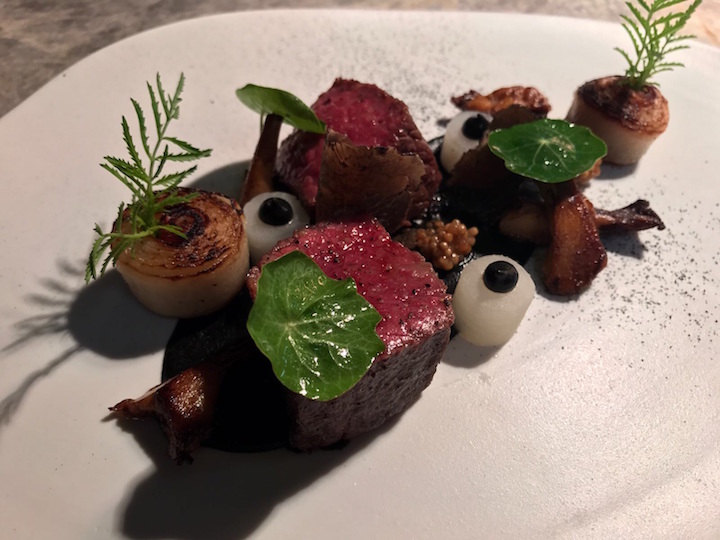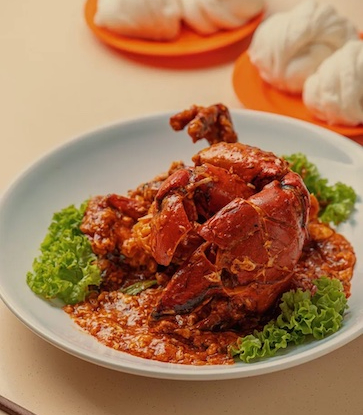After some years – the exact amount of time varies by the product and the experience of the shifu – the frequency of sun-drying can be reduced to once every couple years, and eventually the dried seafood can be left to continue ageing undisturbed in glass storage jars.
The appeal of dried seafood
“The dried seafood don’t noticeably shrink in size from moisture loss the way dry aged beef does,” says Vicky Cheng, executive chef of the Michelin-starred restaurant VEA. “Sun- or even machine-drying cannot remove all the moisture. Only time can continue the drying and initiate the ageing process.” He cites the abalone as a prime example.

“All the while during the ageing, fermentation goes on inside the abalone, breaking down the cells and tenderizing everything,” says Cheng. It would be impossible to replicate that jelly-like texture with a fresh, or even newly aged, abalone.
At VEA, Cheng excels at introducing Chinese ingredients and flavours to classically French cooking techniques to create what he has coined as “Chinese x French” cuisine. Dried seafood, instantly recognisable as traditionally Chinese ingredients, often feature in his menus.
“The moment you hear the name, see the ingredient, smell its aroma, or taste its distinct flavour, you know it is Chinese,” he says. “But it might be presented in an unexpected or surprising way.”
Though he acknowledges the purported health benefits of dried seafood, it is the flavour, texture, and visual appeal that drive his selections. Though the older ingredients are often more expensive, they are not always better for his purposes.
“I prefer using a fresher batch of dried shrimp because the colour is more vibrant,” he says. Thus when he extracts oil from them, the reddish-orange hue comes through as well.

Similarly, Cheng prefers a semi-dried oyster over a fully dried oyster, despite the fact that the latter is much more intense in flavour.
“Given the type of French restaurant that we are, a fully dried oyster would be too much,” he says. “But a semi-dried oyster has some of that distinct dried oyster aroma, but still retains some of the fresh oyster texture. So it is like an entry level to dried oysters.”
Experimenting with a modern touch
When it comes to adding elements of dried seafood to his dishes, Cheng often relies on expert advice from Kwan Lok Sum, owner of MD Sum Kee Dried Seafood Shop in Sheung Wan, conveniently located a couple blocks up Wellington Street from VEA.

Jars of varying types of dried sea cucumber, abalone, and scallops line the walls. Golden straw coloured disks of fish maw hang from the ceiling, while more precious ones, some aged over 75 years to the shade of dark wood, are carefully packed away in boxes. Bags of dried mushrooms, black moss, and other ingredients are displayed in front.
“He has a wide range of products, so he supplies most of the dried products I need,” Cheng says.
Over the years, they have developed a trusted relationship. “I often go into the shop with an idea, and he will suggest which product makes the most sense for how I am planning to use it in the dish. It isn’t always the most aged and most expensive version that best serves my purposes.”

When developing a now-popular wagyu beef dish, Cheng wanted to enhance his beef reduction sauce with a powerful punch of umami from some homemade XO sauce. Having understood Cheng’s intentions, Kwan had brought out a jar filled with small, dark brown and red dried scallops, unimpressive in size but notably intense in aroma.
“We needed strong, concentrated flavours to stand up to the dried shrimp, ham and garlic in the sauce. But he advised me that it is unnecessary to pay more for large scallops because we would be shredding them up into the sauce anyway.”

Lately, Cheng has been toying with the idea of an ice cream dessert infused with dried mandarin peel, and he’s ready to begin exploring the possibilities. Though not a seafood, mandarin peels are dried and aged in a similar fashion.
Kwan brings out a number of jars, filled with aged peels from fruits grown in the same
renowned Chinese region, Tianma in the Xinhui district, where the entire town is devoted to perfecting the art of drying chenpi. The difference in aroma between the younger and older ones is clearly evident from the first whiff.
Kwan feels strongly that an older peel would be better suited for the infusion and he gives Cheng a handful of 27-year-old mandarin peels to take back to VEA and test.
“This should be enough for a couple different batches. I’ll come back later and share my feedback – if it is too strong or too light,” says Cheng. “The older peels might be more expensive, but I trust his opinion one hundred percent.”




















